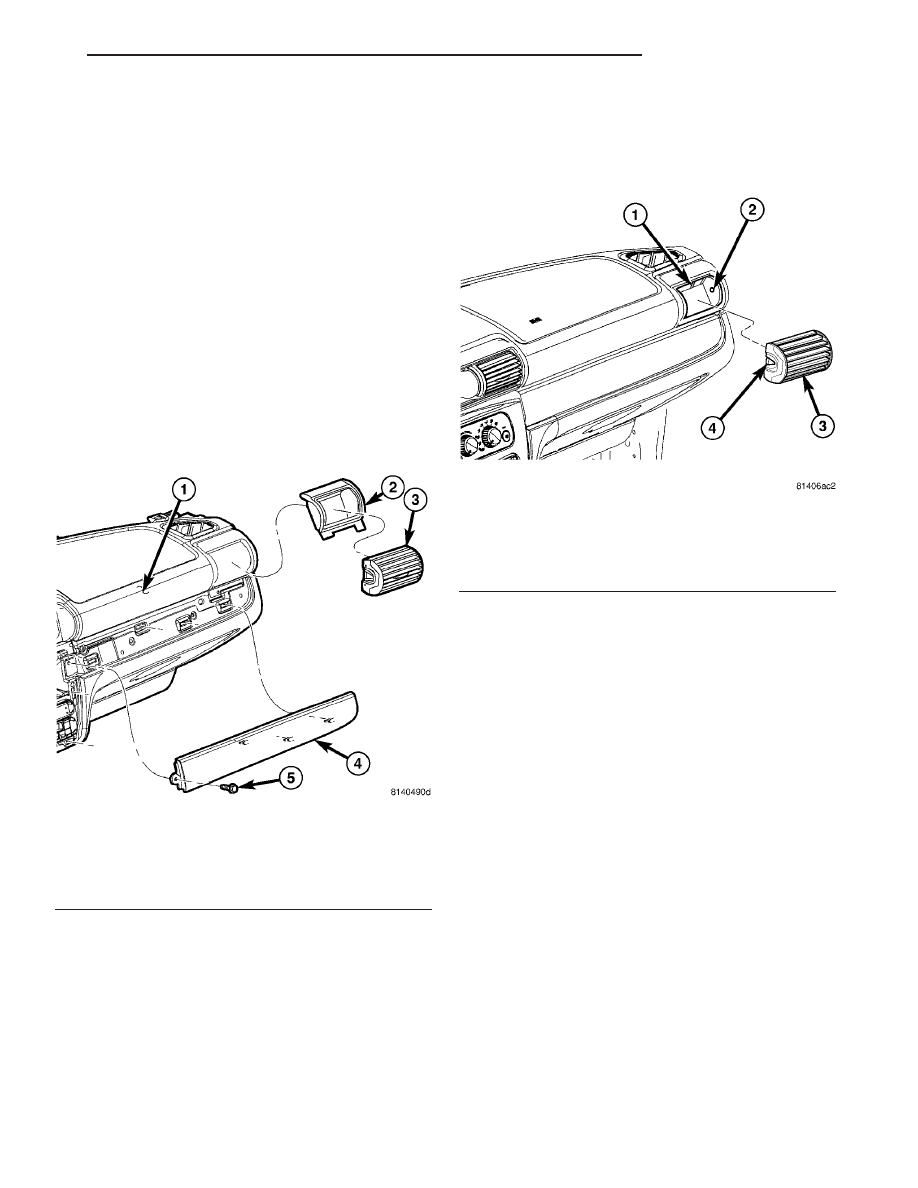Chrysler Sebring, Stratus sedan, Sebring Convertible. Manual - part 735

REMOVAL
REMOVAL - AIR OUTLET
NOTE: Only the right outboard air outlet can be
removed individually for service replacement. The
other instrument panel air outlets are part of the
instrument cluster bezel and cannot be serviced
separately.
(1) Remove the right instrument panel trim bezel
(Refer to 23 - BODY/INSTRUMENT PANEL/IN-
STRUMENT PANEL TRIM - REMOVAL).
(2) Using a trim stick or another suitable wide
flat-bladed tool, gently pry out the air outlet barrel
from the instrument panel air outlet located on the
right outboard end of the instrument panel (Fig. 2).
(3) Remove the screws that secure the air outlet to
the right outboard end of the instrument panel and
remove the outlet.
REMOVAL - AIR OUTLET BARRELS
NOTE: The instrument panel air outlet barrels are
retained to the pivots within the air outlets by a
snap fit.
(1) Using a trim stick or another suitable wide
flat-bladed tool, gently pry on the air outlet barrel
until the barrel retainers release from the barrel piv-
ots of the air outlet housing (Fig. 3).
(2) Remove the air outlet barrel(s) from the instru-
ment panel air outlet(s) as required. If needed, use a
trim stick to help remove the barrels.
INSTALLATION
INSTALLATION - AIR OUTLET
NOTE: Only the right outboard air outlet can be
removed individually for service replacement. The
other instrument panel air outlets are part of the
instrument cluster bezel and cannot be serviced
separately.
(1) Position the air outlet onto the right outboard
end of the instrument panel.
(2) Install the screws that secure the air outlet to
the instrument panel. Tighten the screws to 2 N·m
(17 in. lbs.).
(3) Install the air outlet barrel into the air outlet
by gently pushing the barrel into the outlet until it
snaps firmly into position.
(4) Install the right instrument panel trim bezel
(Refer to 23 - BODY/INSTRUMENT PANEL/IN-
STRUMENT PANEL TRIM - INSTALLATION).
INSTALLATION - AIR OUTLET BARRELS
(1) Position the air outlet barrel(s) to the air out-
let(s) as required.
(2) Install the air outlet barrel onto the pivot shaft
on the right side of the air outlet.
Fig. 2 Right Outboard IP Air Outlet
1 - INSTRUMENT PANEL
2 - AIR OUTLET
3 - AIR OUTLET BARREL
4 - RIGHT IP TRIM BEZEL
5 - SCREW
Fig. 3 Air Outlet Barrels
1 - AIR OUTLET HOUSING
2 - PIVOT SHAFT (2)
3 - AIR OUTLET BARREL (4)
4 - BARREL RETAINER (2)
JR
DISTRIBUTION
24 - 39
AIR OUTLETS (Continued)